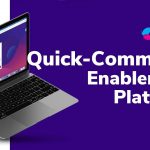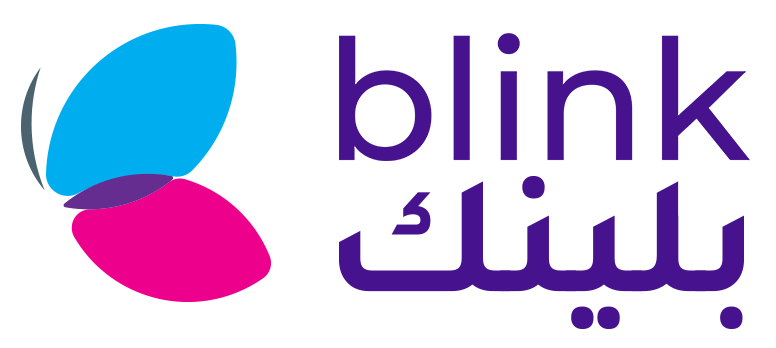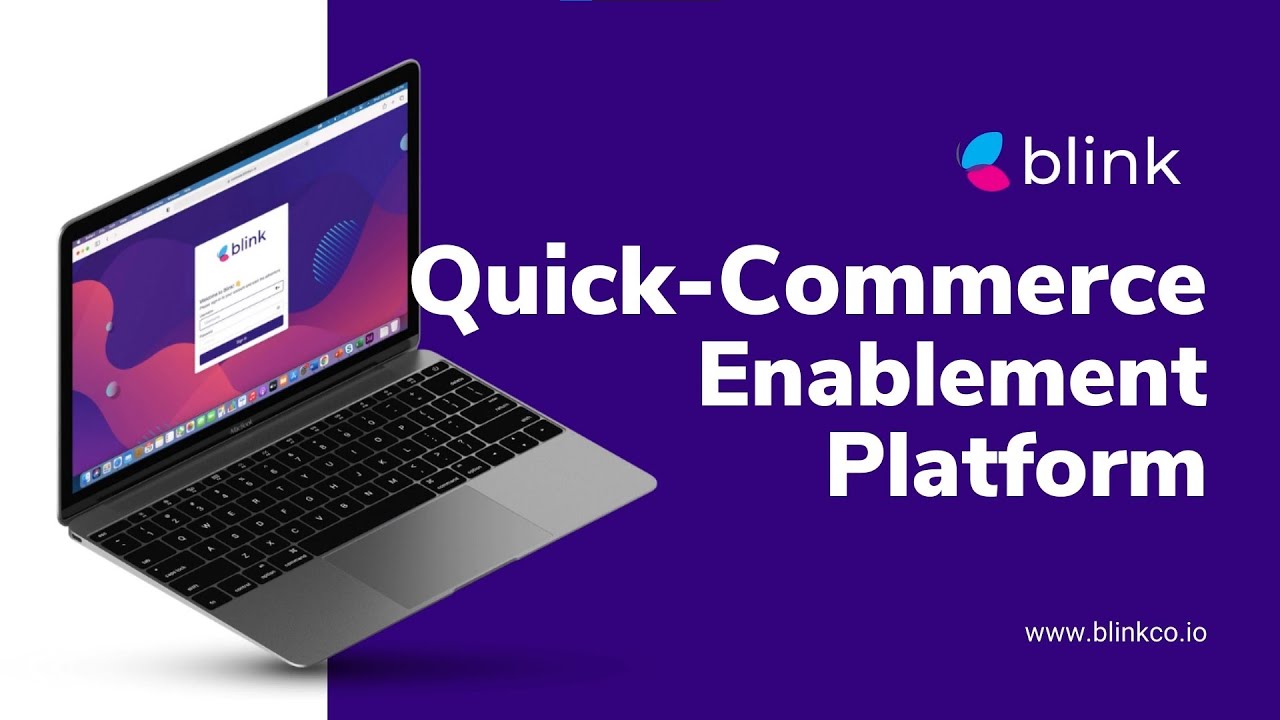According to Technomic, off-premise dining revenue accounts for 44 percent of all restaurant sales, with delivery accounting for 25 percent of those orders. This highlights how important it has now become for your restaurant to offer your customers online ordering.
There are multiple ways you can go down the route of offering online ordering and delivery to your customers.
Whether it be choosing a third-party aggregator or housing a self-branded delivery app and website, the choice depends on how you wish your customers interact with your brand.
Creating the perfect experience for your customers with a branded app and website can be challenging, however. That is where platforms such as Lunchbox and Lunchbox alternatives like Blink come into play.
Here is everything you need to know about offering online delivery with Lunchbox as well as what Lunchbox alternatives can offer your restaurant.
Self-Branded Online Ordering System or Third-Party Delivery Aggregator?
Before we get on to discussing whether Lunchbox is the right platform for your business or if you should look into Lunchbox alternatives such as Blink, there is another question that needs to be answered.
With so many third-party delivery aggregators to choose from, such as Deliveroo, Uber Eats, and FoodPanda why should your restaurant choose not to partner with one?
Handing over your food delivery to a third-party aggregator can seem tempting, especially considering the logistics, costs, and effort that needs to go into making a self-branded app and website.
However, there is a reason many big names in the restaurant industry choose to create their own branded app and website rather than partnering with a third-party aggregator.
Here are some of the value adds that your restaurant will gain from having its own branded app and website to offer customers online ordering and delivery.
Higher Commissions
One of the strongest arguments for turning away from third-party aggregators is the fact that there are high commissions attached to using their services.
Restaurants pay commission fees ranging from 15% to 30% for orders handled through third-party platforms, according to CNN Business.
Since the typical profit margin for a restaurant is roughly 10%, some eateries may find themselves losing money unless they raise their rates.
It’s a thin-margined sector with rising headwinds like labor expenses, which might be too much for some businesses to endure. Consumers are frequently on the hook for a minor delivery fee, so such businesses are unlikely to transfer any expenses onto the menu.
No Control Over Customer Data
If you work with third-party agencies or food aggregators, you will have no control over your customers’ data.
This is especially vital if you want to conduct promotional campaigns or engage in other marketing methods.
There is a lot to gain from customer data and you can use the data to create the perfect experience for your customers with your brand. This is in terms of menu selection, sales, and promotions, etc.
In the long term, having minimal customer data might hurt sales because you won’t be able to keep your clients.
Shorter Delivery Times
It takes the same length of time for both types of food delivery fleets to place an order and have it confirmed by the restaurant.
Only the delivery time differs.
Because there is only one restaurant to handle, delivery via an in-house delivery professional may take less time.
A third-party food delivery operator, on the other hand, might handle orders from many restaurants at once.
Higher Long Term Profits
Although starting your online ordering and delivery business requires a significant financial commitment, the ability to save commission costs may make it beneficial in the long term.
Maintain Complete Control of Customers’ Experience
By choosing a third-party service and entrusting another provider to manage your consumers as you would, you will have to relinquish control over your delivery experience.
When customers shop online, they don’t blame the driver or the vendor that performed the delivery if something goes wrong with the last-mile delivery.
It is the restaurant brand that is held responsible for inconsistencies, which can harm the hard-earned reputation. When the meal is delivered by someone from the restaurant, however, it is easier to assure that the food is exactly as it was when it left the restaurant.
The benefit of conducting your online buying and delivery business in-house is that you keep total control over the order and delivery experience.
Since the majority of earnings come from upselling beverages, appetizers, and desserts to clients with a meal, this is a terrific method to boost income while also providing consumers with useful alternatives.
With self-delivery, the restaurant’s experience for dine-in customers may be extended to those ordering from home.
Direct Customer Contact
Third-party delivery aggregators create communication hurdles between you and your clients.
If you provide the complete experience from start to finish, you are more likely to get useful feedback.
Restaurants account for 78 percent of delivery orders in the US, while third-party delivery services account for only 22 percent.
As a result, if your business launched its online ordering system, it may be able to reach a large number of potential customers.
Lunchbox and Blink: What are They?
Creating a branded app and website is a technical endeavor. If you do not have the right people working on it you could end up with an application that has many glitches and does not function smoothly.
Making sure your brand’s app and website are suited for your customers could require you to spend a great deal on hiring skilled resources.
Platforms such as Lunchbox and its alternatives like Blink have come to take away this hassle.
Lunchbox and Blink provide you with ready-to-use applications for your brand so that you can offer online order fulfillment to your customers with ease.
What Lunchbox Offers
Lunchbox is a cloud-based food delivery service that allows restaurants to handle customer loyalty programs, online ordering, delivery, catering, and other features. Lunchbox is the software that runs your restaurant’s online ordering channel.
Professionals may use the platform to get a better understanding of sales data, automate marketing efforts, and build unique apps.
Menu management, omnichannel ordering, drip advertising, and sales analysis are all key components of Lunchbox.
On a single platform, it allows restaurants to develop and manage digital menus depending on inventory availability. It also offers a virtual assistant powered by artificial intelligence (AI) to aid clients in placing orders based on previous behaviors.
Lunchbox connects with a variety of third-party platforms, including Toast, Square, Twilio, Facebook, and others, allowing restaurants to streamline POS, marketing, and communication procedures.
The solution is accessible on a monthly subscription basis, with assistance provided through online tools.
Lunchbox Alternative: Blink
While Lunchbox is a great platform to consider, it may not be the right choice for the food and beverage business.
Blink is an all-in-one quick commerce operating system with built-in customer interaction and business intelligence tools, completely changing how restaurants, supermarkets, cloud kitchens, and other retailers connect with their customers.
Blink comes with a branded restaurant ordering website and mobile app with Android and iOS App versions for seamless direct ordering of up to 100,000+ items.
You can receive orders straight from your consumers online with a branded website.
Your restaurant can take orders through Facebook and Instagram in minutes using Blink’s rapid commerce enablement platform.
Blink allows restaurants customers to place 30-second orders from anywhere at any time.
Why Choose Blink?
Blink and Lunchbox differ in the target market that they cater to. Lunchbox offers an online ordering system for restaurants whereas Blink’s customer base is more expansive, catering to a variety of different businesses types and sizes including restaurants, small cafes, cloud kitchens, supermarkets, and more.
Lunchbox is also limited in the languages it supports only offering its website and mobile application in English. Alternatively, Blink comes in three languages – English, Arabic, Mandarin, thus catering to a larger customer base.
Furthermore, while Lunchbox offers data analytics, Blink’s business analytics does a deep dive like none of its competitors with a Microsoft Power BI integration. You can use system-generated analytics to aid data-driven decisions.
A complete brand health analysis, specific product analysis, user retention statistics, and conversion analysis are just a few of the many metrics available on Blink.
Blink also offers an additional comprehensive fleet management system to allow you to manage all aspects of delivery in-house along with direct ordering.
Blink’s Key Features
Here are some of the standout features that Blink has to offer:
Comprehensive Merchant Portal
- Dynamic Dashboard: Through a live dashboard powered by business intelligence, you can see real-time data from all of your sales, branches, products, and customers in one place.
- Menu Management: With item uploads through POS or ERP connectivity, bulk item uploads utilizing file imports, and manual item generation, you may add, change, or remove menus and items.
- Advanced Product Variations: At the product level, choose from a larger selection of add-ons for goods with 15+ variants.
- User Management: Data is kept private and confidential thanks to modular, role-based user access restrictions designed for business teams.
- Business Intelligence: Business analytics and reports provided by the system, segmented by branch, product, customer, and more, to enable data-driven decision-making.
Live Order Management
- Customer Data Ownership: With complete ownership rights, filters, and data export options, you may gain safe and secured access to consumer data.
- Geofenced Order Processes: Orders are automatically assigned to branches within preset delivery zones.
- Preordering: With Blink, you can take orders from consumers and arrange delivery in advance at your leisure.
Marketing Tools
- Discounts and Promotions: Offer limited-time discounts and promo codes that may be enabled and disabled automatically.
- Loyalty Programs: In just a few clicks, you can keep your clients with your own built-in loyalty program.
- Data Filtering: Filter client information by order date, branch, location, device, and more to get the information you need.
- SMS Marketing Integration: SMS marketing integration with low-cost packages and attribute filters in one location for targeted, end-to-end SMS marketing.
- Targeted Facebook Advertising: By generating specific audiences from your client database, you can now pick which consumers to promote to on Facebook and Instagram.
- Push Notifications: Use unlimited, free push notifications sent using Firebase to communicate with your consumers at no further cost.
Online Payment Processing
With Blink’s secure payment gateway, you may accept debit or credit card payments from your clients online.
Why Blink is the #1 Lunchbox Alternative in 2022
Blink is a Quick Commerce Enablement Platform for Restaurants that not only matches what Lunchbox offers but goes over and beyond and at a much more cost-effective price. We strongly believe that once we walk you through our product stack including the branded app, website, and analytics dashboards on offer, you’ll definitely opt for Blink as the number #1 Lunch box alternative for 2022 & beyond.
Related Articles:
 Restaurant Menu Optimization Guide for New Business
Restaurant Menu Optimization Guide for New Business
 Online Ordering vs Call-In Orders: Which One is Right For Your Restaurant?
Online Ordering vs Call-In Orders: Which One is Right For Your Restaurant?
 How Blink Powers Businesses with Fast Order Fulfillment
How Blink Powers Businesses with Fast Order Fulfillment
 The 4 Best GrubTech Alternatives for Restaurants In 2022
The 4 Best GrubTech Alternatives for Restaurants In 2022
 How Food Delivery Apps in Saudi Arabia Are Killing Your Restaurant Business
How Food Delivery Apps in Saudi Arabia Are Killing Your Restaurant Business











